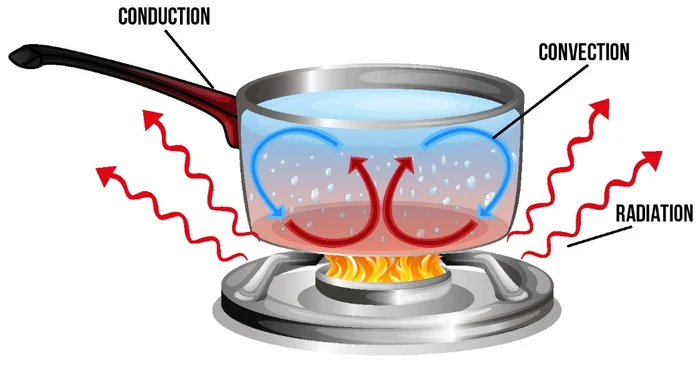Entertainment
3 types of heat transfer examples, 4 methods of heat transfer, cool or heat air conditioner, cool or heat meaning, does it take more energy to heat or cool water, does it take more energy to heat or cool your body, how is heat transferred from the sun to earth, sensible heat, what is heat, why would it be incorrect to say that heat rises?
Admin
0 Comments
Cool or Heat – The Complete 2000-Word Guide to Pain Relief and Recovery
When you feel pain, whether from an injury, sore muscles, or an ongoing condition, the first question you often face is: Should I use cool or heat? It sounds simple, but the choice can make a big difference in your recovery. Applying the wrong therapy can actually make symptoms worse, while the right one can speed up healing and bring quick relief.
This guide dives deep into the science and practical application of cool or heat therapy. You’ll learn how each works, when to use them, potential risks, and how to combine both for maximum benefit. By the end, you’ll have a clear roadmap for using cold and heat therapy in your everyday life.
What is Cool or Heat Therapy?
Before choosing between them, it helps to understand what cool and heat therapy actually do inside your body.
Cold Therapy (Cryotherapy)
Cold therapy, often called cryotherapy, involves lowering the temperature of tissues in a specific area. It works by:
- Constricting blood vessels, which reduces blood flow.
- Limiting swelling and inflammation.
- Numbing nerve endings to dull sharp pain.
Common ways to use cold therapy include:
- Ice packs or frozen gel packs.
- Cold compresses.
- Ice baths or cold plunges.
- Professional cryotherapy chambers.
Heat Therapy (Thermotherapy)
Heat therapy increases the temperature of tissues, which produces almost the opposite effect of cold:
- Expands blood vessels, improving blood flow.
- Relaxes tight or stiff muscles.
- Encourages healing by delivering oxygen and nutrients.
Common ways to use heat therapy include:
- Heating pads or electric blankets.
- Warm towels or compresses.
- Hot baths, showers, or saunas.
- Infrared lamps or heating devices.
Cool vs. Heat: How They Compare
Here’s a simple side-by-side look:
| Therapy | Best For | How It Works | Common Uses | Risks |
| Cool | New injuries, swelling, bruises, migraines | Narrows blood vessels, numbs pain, limits inflammation | Sprains, muscle tears, migraines, swelling after surgery | Frostbite, skin irritation, worsened stiffness |
| Heat | Chronic pain, stiffness, arthritis, tension headaches | Expands blood vessels, relaxes muscles, boosts healing | Arthritis, lower back pain, stiff joints, tension headaches | Burns, worsened inflammation, dehydration |
When to Use Cold Therapy
For acute injuries—those that occur abruptly and result in immediate pain, swelling, or redness—cold therapy works best.
Examples of when to use cold therapy:
- Twisting an ankle while running.
- Pulling a hamstring during sports.
- Banging your knee on furniture and developing a bruise.
- A migraine starting with sharp, throbbing pain.
Doctors often recommend the R.I.C.E. method (Rest, Ice, Compression, Elevation) during the first 24–48 hours of an injury.
Case Study Example:
A soccer player sprains his ankle during a game. Instead of applying heat, he ices it for 20 minutes every hour. This limits swelling, controls pain, and prevents further damage. If he had applied heat immediately, it could have worsened inflammation and prolonged recovery.
When to Use Heat Therapy
Heat therapy is best for chronic or lingering pain, stiffness, and tension. It helps tissues relax and prepares muscles for activity.
Examples of when to use heat therapy:
- Easing stiffness from arthritis.
- Relaxing tight lower back muscles.
- Relieving tension headaches from stress.
- Soothing menstrual cramps.
Case Study Example:
A woman with chronic lower back pain from sitting at work applies a heating pad for 30 minutes each evening. Over time, her muscles relax, blood flow improves, and her flexibility increases. Cold therapy wouldn’t have helped here because the problem wasn’t swelling but stiffness.
Cool or Heat for Specific Conditions
Choosing cool or heat often depends on the condition:
- Sports injuries → Cold first (to reduce swelling), then heat (to speed recovery).
- Arthritis → Heat for stiffness, cold for flare-ups.
- Back pain → Heat for chronic pain, cold for sudden flare-ups.
- Headaches → Cold for migraines, heat for tension headaches.
- Post-workout recovery → Athletes often use both in contrast therapy.
Quick Reference Chart
| Condition | Cold or Heat? | Why |
| Sprains & strains | Cold | Reduces swelling and inflammation. |
| Arthritis | Heat (stiffness), Cold (inflammation) | Depends on symptoms. |
| Chronic back pain | Heat | Loosens tight muscles. |
| Sudden back injury | Cold | Prevents swelling. |
| Migraine headache | Cold | Numbs nerves and slows blood flow. |
| Tension headache | Heat | Relaxes tight neck/shoulder muscles. |
The Benefits of Cold Therapy
- Quick pain relief through numbing.
- Controls swelling and tissue damage.
- Prevents bruising from spreading.
- Helps after surgery to minimize complications.
The Benefits of Heat Therapy
- Relaxes and soothes sore muscles.
- Improves blood flow and healing.
- Enhances joint flexibility.
- Provides a calming, stress-relieving effect.
Risks and Safety Tips
While both therapies are safe when used correctly, improper use can cause harm.
Cold Therapy Risks
- Frostbite if ice is applied directly to skin.
- Can worsen stiffness if used for too long.
- Not ideal for people with circulation problems.
Heat Therapy Risks
- Burns if heating pads are left on too long.
- Can worsen swelling in new injuries.
- Not recommended for people with diabetes or vascular disease without medical advice.
Safety Guidelines:
- Always place a cloth between your skin and the heat or ice.
- Cold: 15–20 minutes at a time.
- Heat: 20–30 minutes at a time.
- Never fall asleep with heat or ice applied.
Combining Cool and Heat (Contrast Therapy)
Sometimes the best approach isn’t choosing between cool or heat—it’s using both. This method is called contrast therapy.
How it works:
- To lessen swelling and numb discomfort, apply cold initially.
- Follow with heat to relax muscles and promote healing.
Best for:
- Sports recovery.
- Chronic injuries that flare up.
- Post-workout soreness.
Example: After an intense workout, an athlete alternates between a cold shower and a warm bath. This back-and-forth boosts circulation and helps muscles recover faster.
FAQs About Cool or Heat Therapy
Q: Should I use cool or heat for knee pain?
- Cold for sudden injuries like sprains, heat for arthritis or stiffness.
Q: Which is better for back pain—cool or heat?
- Heat for chronic lower back pain, cold for sudden injury flare-ups.
Q: How long should I apply each therapy?
- Cold: 15–20 minutes. Heat: 20–30 minutes.
Q: Can I switch between cold and heat?
- Yes, contrast therapy works well for recovery.
Q: Can I use heat for swelling?
- No, heat will worsen swelling. Use cold therapy instead.
Expert Tips for Using Cool or Heat Effectively
- Use ice first, heat later for sports injuries.
- Pair heat with stretching to maximize flexibility.
- Use cold therapy immediately after intense exercise to reduce soreness.
- Apply a cold compress to the back of your neck or forehead if you have a migraine.
- A heating pad placed across the lower belly is a great way to relieve period cramps.
Final Thoughts – Should You Use Cool or Heat?
The decision between cool or heat depends on the nature of your pain.New, acute injuries respond best to cold therapy because it reduces swelling and dulls severe pain.. Heat therapy shines when dealing with chronic, lingering pain and stiffness, helping muscles relax and heal. In many cases, using both at different stages leads to the best outcome.
Key takeaway:
- Cold first for fresh injuries.
- Heat later for relaxation and healing.
- For chronic problems and sports rehabilitation, both are used combined (contrast therapy).
If your pain doesn’t improve, or if you have a medical condition like diabetes, poor circulation, or nerve damage, always consult a healthcare professional before using either method.














Post Comment